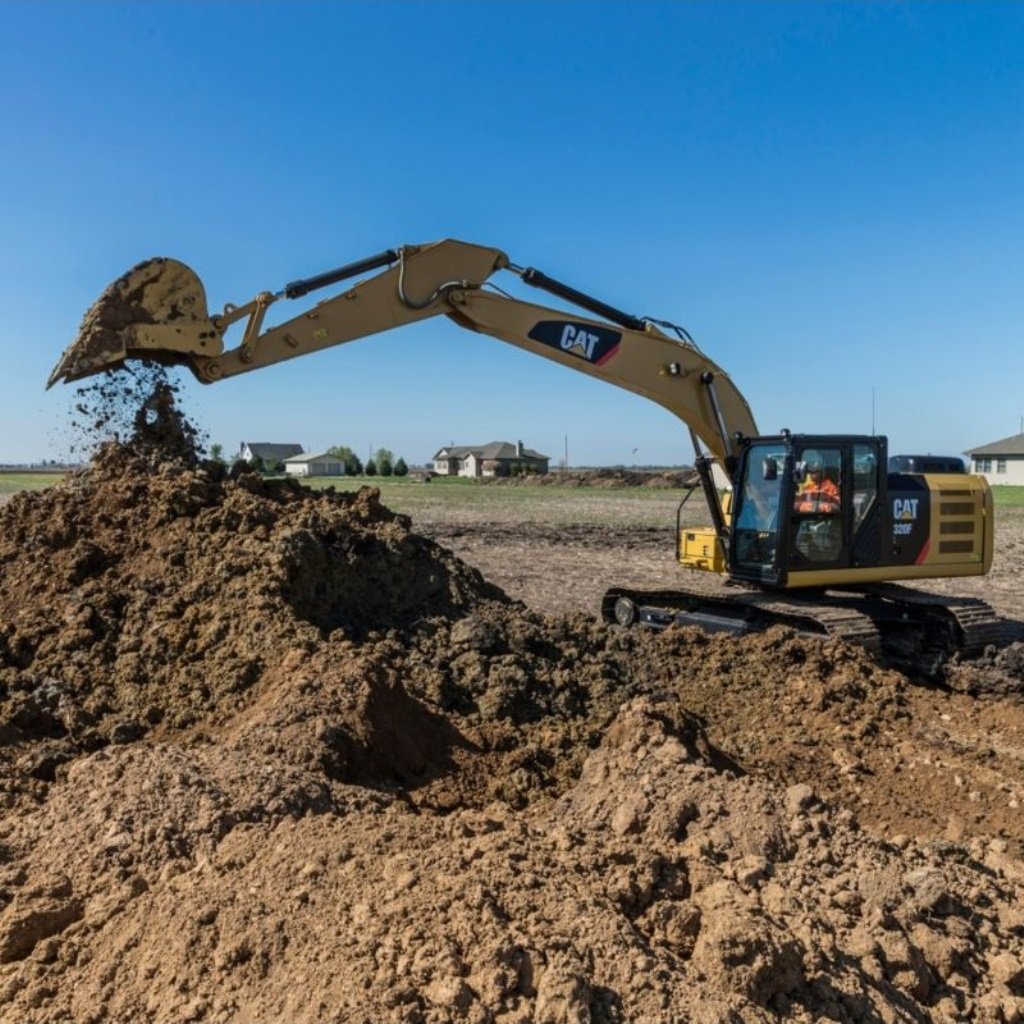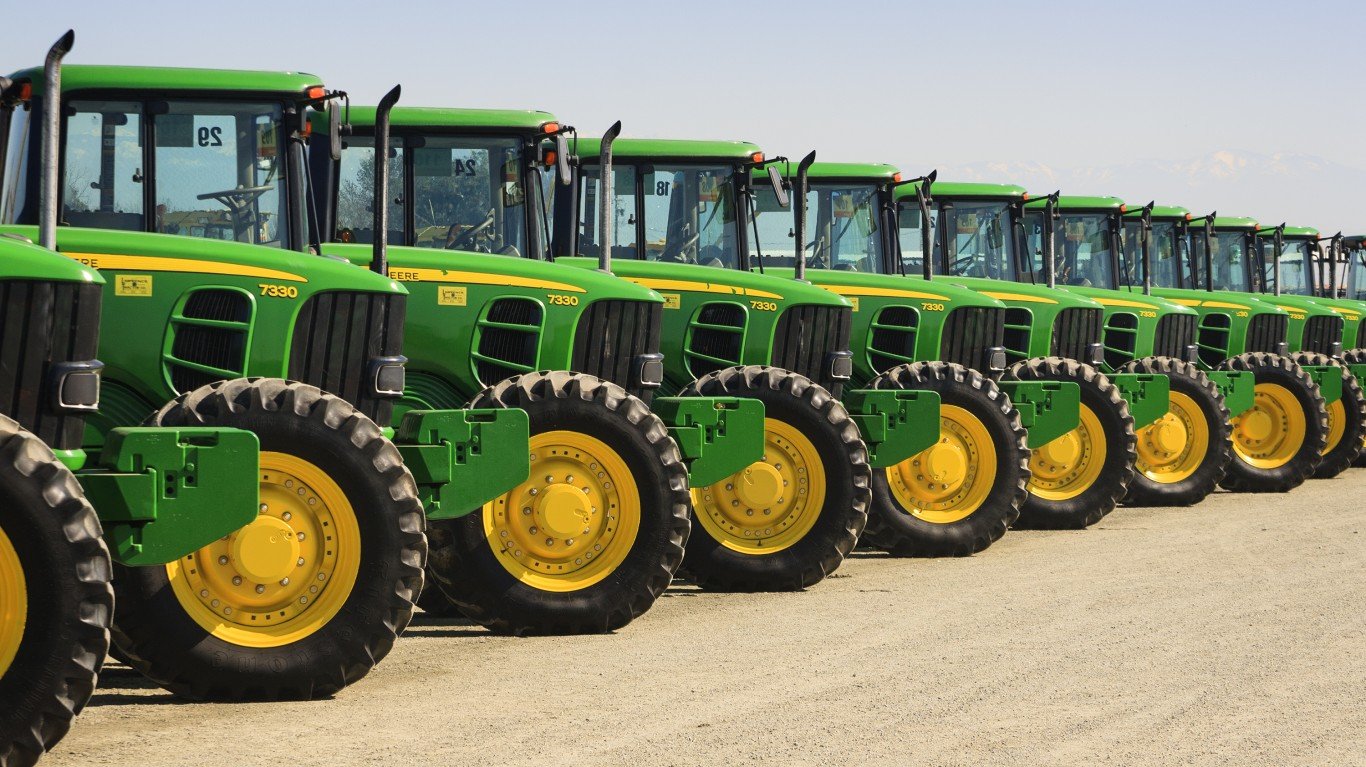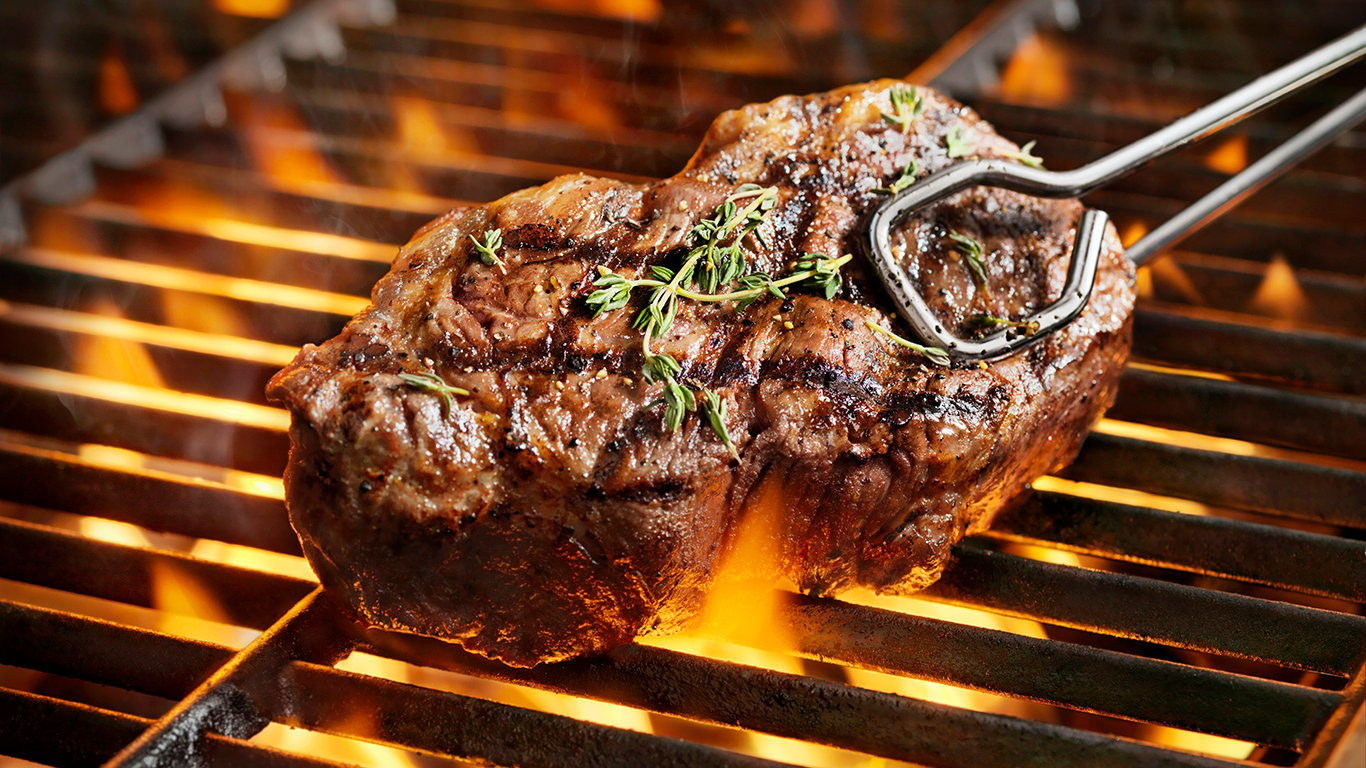

When President Trump on Thursday told executives of U.S. steel and aluminum producers that the United States would impose tariffs on imports of those materials, the Dow Jones industrial average dropped 500 points and all three major equities indexes posted losses of more than 1% for the day.
But much of that response may simply have been reflexive — the so-called knee-jerk reaction — to anything that threatens to raise prices. Companies that consume a lot of steel, like Caterpillar Inc. (NYSE: CAT) and Deere & Co. (NYSE: DE), have not commented yet.
The Association of Equipment Manufacturers (AEM) told The Wall Street Journal that new trade barriers will hurt American exports and Caterpillar executives are on record as having said that tariffs push up costs for domestic steel and will make building the company’s heavy equipment more expensive.
Steel and aluminum combine to account for about 75% of the raw material expense for makers of big machinery. Adding 25% to that big a piece of the product cannot help but boost prices for Caterpillar and Deere customers.
A lot depends on what kind of steel and aluminum products the Trump administration decides to impose tariffs on. The President is invoking a rarely used section (232) of the 1962 Trade Expansion Act which gives him the authority to impose trade sanctions in order to defend “national security” interests.
Does “cansheet” aluminum fall under that authority? That’s the stuff companies use to make the cans for beer and soft drinks that consumers buy.
What about sheet steel and aluminum used in car bodies? That’s a different kind of manufactured steel and aluminum product, and there are many others.
Every single manufacturing group that uses a different product is going to be calling on the White House for an exemption for their type of steel or aluminum. One might conjecture that these pleadings will be part of the appeal for a president who seems to value attention above nearly all else.
While Caterpillar, Deere and other industrial firms will face a pinch, they will soon figure out a way to pass along the costs to their customers. That sort of fix is trickier for a farmer or rancher, and that is where reprisals are likely to hit first.
Agricultural exports from the United States are often the first target of retaliation from country that gets whacked by U.S. duties and tariffs. In 2009, President Obama levied duties ranging from 25% to 35% on imported Chinese automobile tires. China responded with a tariff on chicken parts.
When China in 2016 stopped consuming a large portion of its own producers’ output, the Chinese steelmakers dumped the steel on the global market at discounts of up to 90% compared with the price just four years earlier. But dumping is not illegal, and the remedy is a tariff or duty imposed on all of a country’s makers of a similar product.
Such tariffs have had little positive impact on U.S. steel producers, however, even when they were set as high as 500% on some steel products. And the reason: the U.S. steel industry is disappearing, just like the U.S. coal industry is disappearing. Only about 140,000 Americans are employed in the steel industry, currently and while these are mostly good-paying, union jobs, no tariff is likely to bring the industry back.
We’ve already written about the impact of Thursday’s announcement on Boeing Co. (NYSE: BA) stock, but the impact on the company is likely much less. About 70% of the weight in a Boeing 777 or 737 is down to aluminum, and aluminum accounts for 30% of the cost an aircraft. A 10% increase in aluminum costs pencils out to an overall cost increase of less than 2%, according to a JPMorgan analyst cited at Leeham News.
Caterpillar’s stock traded down about 2.6% at $146.36 in the late morning Friday, in a 52-week range of $90.34 to $173.24.
Deere’s stock traded down about 3% to $152.09, in a 52-week range of $106.93 to $175.26.
The Dow was down about 375 points (1.52%) at 24,233.86.
Take This Retirement Quiz To Get Matched With An Advisor Now (Sponsored)
Are you ready for retirement? Planning for retirement can be overwhelming, that’s why it could be a good idea to speak to a fiduciary financial advisor about your goals today.
Start by taking this retirement quiz right here from SmartAsset that will match you with up to 3 financial advisors that serve your area and beyond in 5 minutes. Smart Asset is now matching over 50,000 people a month.
Click here now to get started.
Thank you for reading! Have some feedback for us?
Contact the 24/7 Wall St. editorial team.
 24/7 Wall St.
24/7 Wall St.


